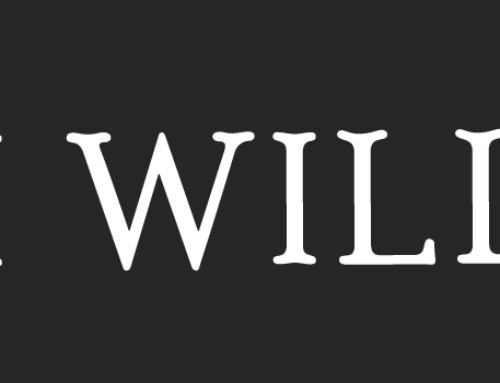“In the future we are wonderful people.” ~ Dan Ariely
If you’re like me, you were eager to jump into the new year. The new year means new opportunities, experiences and… new goals. But the goals we set in January are often long-forgotten by July. Or worse, they hang around our neck like an albatross reminding us of our inaction.What can we do to make sure we stick to our goals? Bright lines can make the difference between success and failure.
Bright lines: Take a lesson from the law
A bright line is a clear rule you will follow in a particular situation. Bright lines are common in the justice system. A well-known example of a bright line rule in the United States is the Miranda warning. The US Supreme Court ruled in Miranda v. Arizona that a person must be informed about their right to remain silent and to have legal counsel before being questioned by the police.
Legal bright lines simplify decision making. You can’t help but notice if you’ve crossed a bright line. If the suspect was not read his rights, the confession is not valid. But the real value of bright lines is that they also shape behavior. Rarely do the police forget to read someone their rights.
A bright line must be specific and measurable. “I will exercise for thirty minutes every day” is a bright line; “I will work out more often” is not. Following a rule 100 percent of the time is easier than 98 percent. You are more likely to stick to your commitments when they are bright lines and not fuzzy squiggles.
What do bright lines mean for you?
A bright line by itself is neither good nor bad. It is simply a mechanism for shaping behavior. Care is needed to choose bright lines that nudge your behavior in the right direction.
First decisions matter. Behavioral economist Dan Ariely says that our first decision on a subject (for example what kind of moisturizing cream to buy) will quickly turn into a routine. (We will continue to buy the same cream unless overwhelming circumstances cause us to revisit the decision.)
Bright lines also limit the evidence that we consider. For example, if your bright line is “I will buy only organic vegetables” then you may end up buying more expensive, 5-day-old broccoli (as I have) and ignoring the fresh, local, non-organic broccoli on the next shelf. A better bright line would be “I will buy only fresh vegetables, preferably organic.”
The trick is to set bright lines that will turn into positive routines without unnecessarily limiting your options.
When I am at a workshop at a hotel, one of my personal bright lines is “I will not touch the sweets at a lunch buffet.” I don’t need the extra carbs at lunch. The chocolate soufflé after dinner is an option that I keep open ;-)
Examples of bright lines in business:
“I will return all customer calls within 24 hours.”
“I will have a one-on-one talk with each direct report each week.”
“I will seek the opinion of at least three people before making an important decision.”
“I will determine and clearly communicate my priority in any given situation.”
“I will arrive at the office before 8:00 am and leave by 6:00 pm.”
Just sign on the (bright) line
Setting bright lines is one thing; following them is another. How can you be sure you will do the right thing when the going gets tough?
One way is to form a commitment contract. You lock yourself into a preferred course of action when your willpower is high. Homer’s Odysseus did exactly this when he had his men tie him to the mast so that he could resist the siren’s call.
A commitment contract requires that something of value is at stake. Let’s say your goal is to exercise every day. Nir Eyal suggests you tape money to your calendar. Each day you are confronted with a choice: exercise or lose the money. Nir was prepared to burn $100 but reports that so far he has been burning calories, not money.
If you don’t trust yourself to follow through on the commitment contract, you can outsource compliance to services like Stickk. Yale University professor Ian Ayres is one of Stickk’s founders. He shares his own story about how putting $500 at stake per week helped him lose 20 pounds (9 kg) and keep it off.
Stickk helps you enforce your commitment contract. You choose how much money to put at stake and you name referees who will monitor your progress. If your referees report that you fail to stick to your commitment, pfoof… your money goes to a charity. The strategy works even better if you choose an “anti-charity” whose views and goals you strongly oppose. The thought of an anti-charity getting your money will make you work doubly-hard to stick to your goal.
Commitment contracts work because of our innate tendency toward loss aversion. Cognitive scientists note that we are more motivated to avoid a loss than to make a gain. As Tversky and Kahneman put it, “losses loom larger than corresponding gains.”
We also tend to discount events (good or bad) that may occur in the future. Temporal discounting means that a future outcome is unlikely to shape our present behavior. The prospect of suffering a heart attack in 20 years is not motivation enough for me to exercise now. The threat of losing money now is more effective in getting me off my butt and out of the house!
Tell them about it
A bright line gains traction when you make it public—you tell people what you are going to do (or not do).
A commitment made to yourself while alone in a dark room wearing sunglasses doesn’t mean much—you can back off and no one will know. But a commitment made in front of your colleagues in the light of day does.
In fact, just telling people about your bright line rule creates a kind of “social commitment contract.” Even if no money is at stake, your reputation is. Your desire to honor your commitments and maintain integrity in front of peers is a powerful influence.
What’s a leader to do?
Set bright lines. Think of specific situations you experience repeatedly where you are not satisfied with the outcome. What could you do in this situation to lead to a positive outcome? Is there a clear rule that you could follow to help you get there? That’s your bright line.
Make a commitment. Put something of value at stake. It doesn’t have to be money. Your time may be more valuable. Think of a (useful) but time-consuming task that you normally delegate and agree to do it yourself if you fail to stick to your goals. Inform a trusted referee about your commitment and ask them to hold you to it.
Share your bright lines. Once you have set your leadership bright lines, share them with your team and peers. Making your commitment public will add the positive impact of social influence and help you stick to your goals.
What do you think? Please leave a comment.
References
Ariely, D. (2008). Predictably irrational: The hidden forces that shape our decisions. New York, NY: Harper.
Baumeister, R., & Tierney, J. (2011). Willpower: Rediscovering the greatest human strength. New York: Penguin Press.
Clear, J. (2015). How to Declutter Your Mind and Unleash Your Willpower by Using “Bright-Line” Rules.
Tversky, A., & Kahneman, D. (1991). Loss Aversion in Riskless Choice: A Reference-Dependent Model. The Quarterly Journal of Economics, 1039-1061.
Image courtesy of Ryan McGuire / CC0



